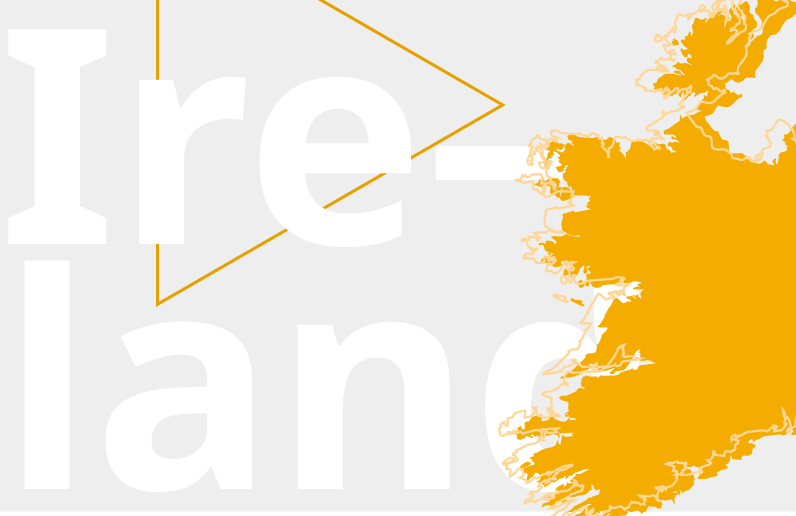Growing from the experience as a postdoctoral researcher
Meet Robin Burns, Research Associate at the University of Cambridge | Former EMBO Postdoctoral Fellow
Facts and figures, life scientists in Ireland, EMBO opportunities
Meet Robin Burns, Research Associate at the University of Cambridge | Former EMBO Postdoctoral Fellow
Meet Ines Thiele, National University of Ireland, Galway | Former EMBO Young Investigator
Learn about newly elected EMBO Member Ruth Massey and her research

Ireland joined the EMBC as a member state in 1974. Life scientists in Ireland are eligible for all EMBO Programmes supporting life scientists in Europe and beyond.
The Republic of Ireland is a middle-sized country of nearly 70,000 square kilometres comprising 26 of the 32 counties on the island of Ireland west of Great Britain. A parliamentary democracy, its population of 5.3 million enjoys the second-best standard of living in the European Union in terms of GDP per capita which is more than double the EU average.1
Ireland has a large global diaspora arising from several centuries of emigration. The Irish Government has estimated that more than 70 million people around the world claim Irish ancestry including more than 36 million in the United States.2
Ireland has been described as one of Europe’s leading “innovation nations” and is ranked 1st in the world for knowledge diffusion, 3rd for knowledge impact, 6th for university-industry research and development collaboration and as the 7th most innovative country in the EU.3
Ireland has 13 universities4 with a total of more than 170,000 students studying bachelor or higher degrees5, including Trinity College Dublin which was founded in 1592 and is the country’s oldest higher education institution6. Other major centres include Cork, Galway and Limerick.
Around 63% of the adult population have attained a tertiary education.7 In 2021, an estimated 39,290 people in Ireland were employed in R&D work.8
The European Patent Office granted 416 patents with first patentees residing in Ireland in 2022.9
Gross expenditure on research and development (GERD) as a percentage of Gross Domestic Product has fallen from 1.15% in 2020 to 0.96% in 2022.8 GERD was forecast to reach 4,874 million Euro in 2022.8 The main sectors financing GERD were business enterprise providing 55.5%, and the government sector (16.8%).10
In August 2024, the Irish Government merged the two research funding agencies Science Foundation Ireland and the Irish Research Council to create Taighde Éireann – Research Ireland to promote the contribution of research and innovation to the country’s economic, social, cultural, and environmental development and sustainability.11
Irish researchers are also eligible for funding through Horizon Europe projects, European Research Council grants, and Marie Skłodowska-Curie Actions12 as well as EMBO.
Population: 5,343,8051
R&D spending: 1.06%8
People employed in R&D: 39,2918
Patents (European Patent Office): 4169
Higher education institutions: 134
Higher education enrolment: 170,000 students enrolled5
Horizon 2020 funding:13
– 2,980 organizations including 785 small and medium-sized enterprises (SMEs) participating in H2020 projects
– 111 ERC principal investigators
– 666 organizations participating in Marie Skłodowska-Curie Actions
All life scientists in Ireland are eligible for the EMBO Programmes supporting life scientists in Europe and beyond.
Find out about all EMBO funding schemes here.
All information as of October 2024.
Meet Robin Burns, Research Associate at the University of Cambridge | Former EMBO Postdoctoral Fellow
Meet Ines Thiele, National University of Ireland, Galway | Former EMBO Young Investigator
Learn about newly elected EMBO Member Ruth Massey and her research